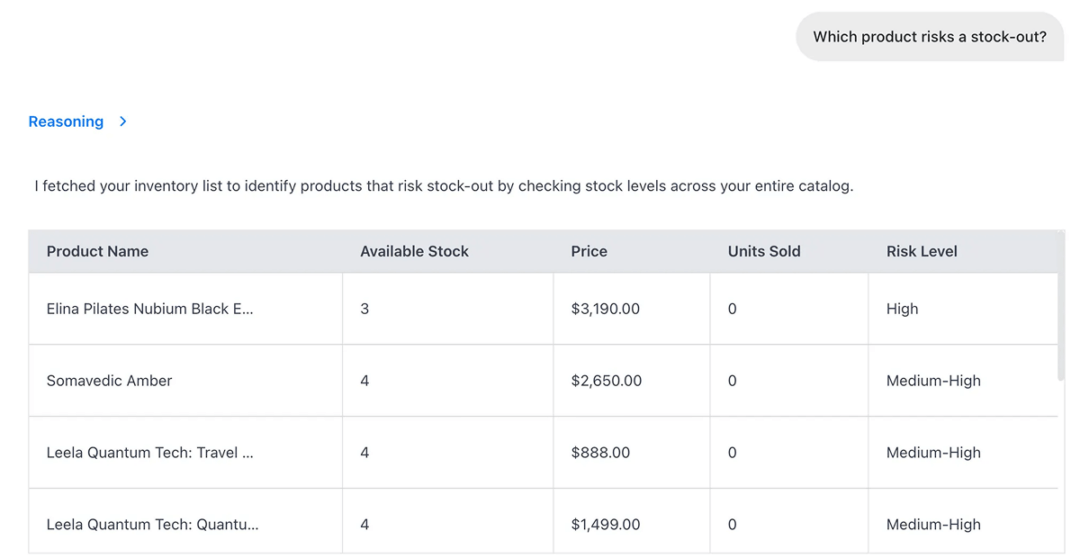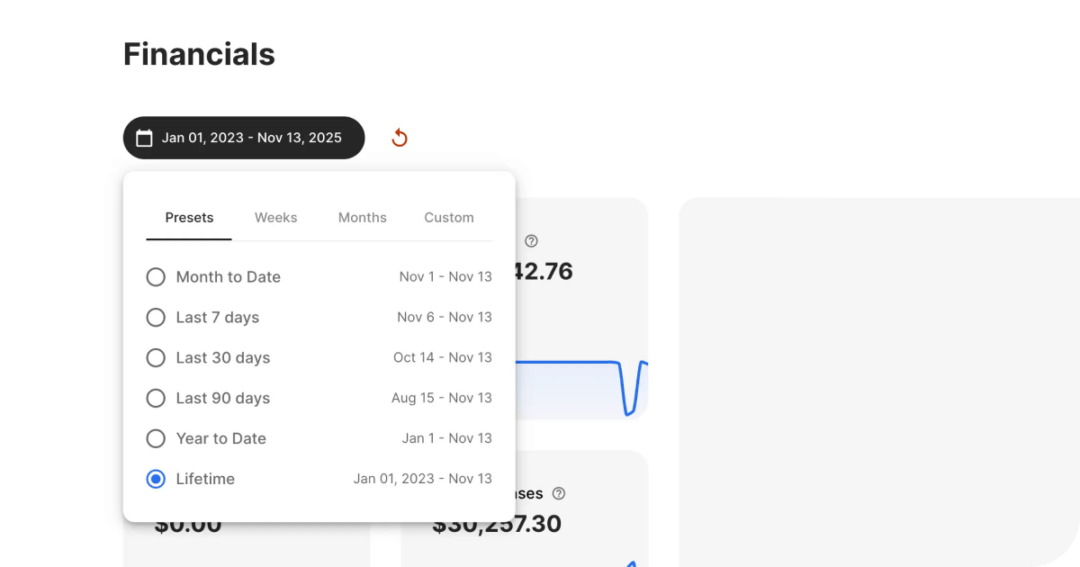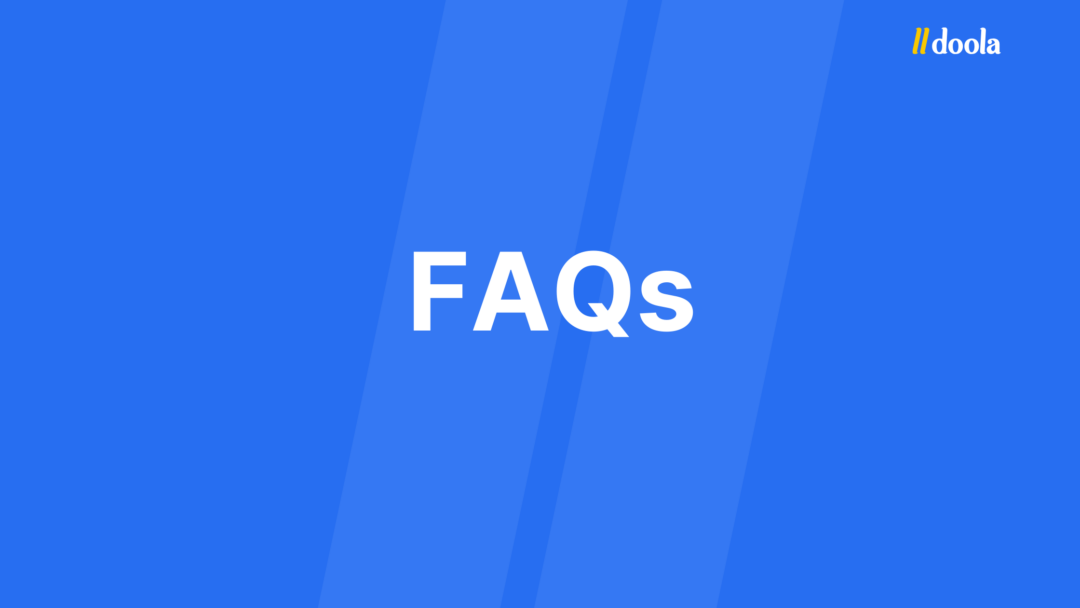Get ahead of the 2025 e-commerce rush this Black Friday. Learn the 9 must-have tool categories that top online sellers use to drive traffic, boost conversions, and protect margins during peak season.
What started as a one-day post-Thanksgiving event has grown into a full-scale global e-commerce phenomenon. The shopping season now lasts from early November through Cyber Monday, blending anticipation, discounts, and momentum.
According to Shopify, 2024 BFCM sales were up 24% over 2023, totaling $11.5 billion in global sales from Shopify merchants alone.
For e-commerce sellers, it’s a pivotal moment where preparation, tools, and agile execution determine whether you capture profit or miss out.
In this guide, you will discover 9 smart tools to maximize e-commerce profit in 2025, that form the ultimate system for preparing for Black Friday. This includes all-in-one platforms like doola, which help you manage the operational backbone of your business.
These tools help you enhance the customer experience and optimize profits during the busiest week of the year for e-commerce.
Let’s get started!
9 Smart Tools to Maximize E-Commerce Profit in 2025
- Traffic & Analytics Tools
- Inventory Forecasting & Stock Management Tools
- Marketing Automation & Segmentation Tools
- Retargeting & Cart-Recovery Tools
- Checkout, Payment & Fraud-Prevention Tools
- Mobile-First & App Engagement Tools
- Post-Campaign Loyalty & Retention Tools
- Referral & Advocate Marketing Tools
- Analytics & Conversion Optimisation Tools
1. Traffic & Analytics Tools
With online traffic up 5.3% year-on-year during peak events, you need live, reliable data to catch the surges, spot friction spots and act fast.
Tips to Get It Right:
- Set up Google Analytics 4 (GA4) and define custom events for your key sales actions: add-to-cart, checkout start, and payment success.
- Deploy heat-map tools (e.g., Hotjar, Microsoft Clarity, PostHog) to see exactly where users click, scroll, or drop off on mobile and desktop devices.
- Create UTM parameters for every campaign across email, social, PPC, and affiliate channels to identify which channel drives the highest-value customers.
- Build a live dashboard (using Looker Studio or Databox) to monitor top KPIs hourly, including sessions, conversion rate, mobile vs. desktop usage, cart abandonment, and average order value.
- Set automated alerts for unusual patterns if your mobile conversion rate drops by 20% within 30 minutes, so you’re notified immediately. You can switch to a different creative, fix the checkout process, or pause a broken ad.
2. Inventory Forecasting & Stock Management Tools

Brands that use dedicated forecasting platforms avoid costly shortage of hot items and excess inventory of slow-moving items. By applying these tools across SKUs and channels, you tie your offers and fulfilment to actual demand.
Key Tools You Can Use:
- Inventory Planner: Offers SKU-level demand forecasting, open-to-buy planning and purchase-order automation.
- Netstock: Supports multi-unit forecasting models and auto-adjusts for promotions, regional differences and lead-time changes.
- StockTrim: Uses machine-learning to optimise reorder points and balance inventory investment with safety stock levels.
Tips to Get It Right:
- Run your first full forecast and identify your top 20% of SKUs by expected volume or margin. Build two scenarios: a base case and a high-demand scenario.
- Configure your tool to send alerts when any item’s projected sell-through exceeds forecast or falls behind.
- Ensure your stock-forecasting tool integrates with your fulfilment system, so orders are placed automatically when lead times shrink or supply changes.
- During the sale weekend, monitor sell-through in real time. If a product moves significantly faster than forecast, pause competing campaigns or redirect traffic to it.
- If you use a platform like doola for your store, use its Ask AI button to ask: “Which SKU is trending now?” or “Which product risks a stock-out?” Then act quickly and leverage your tool’s insights for operational decisions. You can get answers to the top questions directly without juggling between dashboards.
3. Marketing Automation & Segmentation Tools
The brands that stand out aren’t just blasting one email; they’re using automation platforms that trigger coordinated messages across email, SMS, push notifications, and social, turning browsers into buyers and one-time buyers into repeat customers.
For example, brands using automation saw a 13.8% increase in orders on Black Friday and a 34.4% increase during the broader Cyber-10 wind thanks to behavior-based flows.
Key Tools You Can Use:
- Klaviyo: Segment your audience (e.g., VIPs, first-time buyers) and set triggered automations based on behaviour like “viewed but didn’t buy”.
- Omnisend: Email, SMS and web push workflows in one platform, making it simpler to run multichannel campaigns.
- Drip: Tailors lifecycle campaigns and helps you catch returning buyers with tailored messaging.
- Or any tool of your choice that matches the marketing automation needs, as this can make or break your campaign result.
Tips to Get It Right:
- Three weeks out, build and test your automation flows. Define segments (e.g., VIP, new visitor, cart abandoner) and prepare messaging sequences that span email, SMS, and push notifications.
- Set triggers based on customer behaviour (for example: visited hero product → send SMS + push). Make sure each channel is timed to support the next.
- Use automation to personalise messaging: VIPs get early access codes, returning customers get exclusive bundles, and new visitors get simple deal previews.
- Connect your automation tool with your CRM and shopping platform data to update segments in real-time (e.g., when someone becomes a VIP customer).
- Monitor performance during the campaign and adjust accordingly: if SMS messages convert 20% better than email for a specific segment, allocate budgets accordingly.
Related Read: 7 Rules for Staying Profitable With Your Black Friday 2025 E-Commerce Ads
4. Retargeting & Cart Recovery Tools
Global data show that around 70% of online shopping carts are abandoned. Cart recovery and retargeting tools help you convert those potential buyers and boost both conversion rate and average order value.
Key Tools You Can Use:
- CartStack: Sends automated workflows via email, SMS, and push notifications for abandoned carts.
- Siena: Focuses on SMS-first retargeting to drive recovery rates higher.
- Dynamic Yield: Enables personalised retargeting ads based on visitor behaviour and cart data.
Tips to Get It Right:
- Two weeks before launch, segment users into “viewed hero product but didn’t add to cart” and “added to cart but abandoned checkout”. Use a tool above to deploy a “second-chance” offer (for example: “Complete your purchase now and get an extra 5% off – final hour”).
- Set up dynamic retargeting ads that show the exact item the user viewed, combine with urgency (“77 left”) and a clear call-to-action.
- Test your recovery path ahead of time to ensure that email, SMS, and push notifications are integrated, discount codes work correctly, and carts persist across devices (from mobile to desktop).
- If your tool shows less than 10% recovery from abandoned carts (the industry average recovery rate is 10-20%), adjust your messaging, timing, or channel mix immediately.
5. Checkout, Payment & Fraud-Prevention Tools


Protecting revenue means ensuring that payments are smooth for genuine buyers while stopping fraudulent transactions in their tracks.
Key Tools to Use:
- Checkout.com: A hybrid machine learning and rules engine for real-time fraud risk assessment.
- Kount: E-commerce fraud prevention and chargeback management platform for online merchants.
- Signifyd: Order approval and fraud protection tool that aims to protect revenue and minimise risk.
Tips to Get It Right:
- Activate a fraud-prevention solution and configure rules for new customers, high-value carts, and rapid-fire purchases.
- Test your checkout flow end-to-end, including guest checkout, mobile wallet, saved cards, and alternative payments. Make sure your fraud tool filters don’t block legitimate buyers.
- Set thresholds for different risk levels (for example, orders above US $500 or international addresses) and trigger secondary verification only when necessary.
- If your fraud tool approves fewer than 90% of high-value carts, investigate the settings immediately.
- Ensure your payment tool integrates with your refund and chargeback system, allowing you to minimize revenue loss and protect your margin.
- If your store is connected with doola, you can view payment outcomes, refunds, failed charges, and high-risk orders in your dashboard without switching tools.
6. Mobile-First & App Engagement Tools
Mobile devices are the gateway to your peak-weekend sales, but they only convert if your experience is seamless and your messages land at precisely the right moment.
Push notifications, when executed correctly, offer click-through rates significantly higher than email and can convert browsers into buyers in real-time.
Key Tools You Can Use:
- Pushwoosh: Enables web-push and in-app notifications with segment-based targeting and automation.
- Tapcart: Lets you build or optimize your mobile app and send drip-push campaigns tied to product launches or deals.
- Braze: Supports mobile messaging workflows across in-app, push, and email, for high-intensity campaigns.
Tips to Get It Right:
- Two to three weeks before your launch, build mobile-first landing pages, test checkout flows on 3G/4G/5G networks, and ensure the mobile site loads within 2 seconds.
- Schedule a series of push notifications for launch day.
- Segment your mobile audience by behavior (app users, web mobile users, and first-time mobile visitors) and tailor messages accordingly.
- Use countdown or flash-offer timing in your push messages (“Only 2 hours left!”) to drive urgency on mobile, where attention is shorter.
- Measure your push opt-in and click-through rates. According to MoEngage, the average opt-in rate for push notifications among mobile app users is 67.5%. Push notification campaigns also demonstrate click-through rates up to 7 times higher than email.
7. Post-Campaign Loyalty & Retention Tools
Industry data indicate that a 5% improvement in retention can lead to a 25% to 95% increase in profit. Turning new buyers into repeat buyers after your Black Friday weekend is where the lasting business value lies.
Key Tools You Can Use:
- Yotpo Loyalty & Referrals: Loyalty platform with points, VIP tiers, referral tracking, and easily integrated post-purchase flows.
- Smile.io: Offers loyalty and rewards programs built to convert one-time buyers into members, integrated with many e-commerce platforms.
- Klaviyo: Used for triggered loyalty-based flows and segmentation, which helps send customized follow-ups.
Tips to Get It Right:
- Within 24 hours of a Black Friday purchase, send a “Thank you” email that includes a loyalty invite, a preview of upcoming deals, or bonus points for next purchase.
- Tag every BFCM buyer as “Black Friday [Year] – New Customer” in your CRM and schedule follow-up flows at 30 days (upsell offer) and 90 days (loyalty bonus or referral ask).
- Launch a referral campaign targeted at your new buyers, for example: “You got in early – give a friend 10% off, and you get 10% off your next purchase.”
- Measure your repeat purchase rate and customer lifetime value for the cohort that bought during BFCM. Industry data shows top-performing loyalty programs drive 15–25% growth in customer revenue.
8. Referral & Advocate Marketing Tools
Brands that invest in referral programmes see conversion rates up to 3-5x higher than non-referral channels and referred customers with a 16% higher lifetime value.
Key Tools You Can Use:
- Referral Candy: Enables unique referral links and rewards for both referrer and referred customer.
- Referral Rock: Tracks advocate dashboards, reward payouts, and ROI of referral campaigns.
- Open Loyalty: Supports gamified referral flows with tiered rewards, badges, and social-share widgets.
Tips to Get It Right:
- Ahead of your BFCM campaign, set up a referral drive that targets your best customers (e.g., VIPs or past purchasers). Offer an incentive structure, such as “Give $10, Get $10,” for successful referrals; this expands your sales reach beyond paid traffic.
- Launch your referral programme on day one of your sale and promote it via email and social media so customers know they can turn their purchase into a reward.
- Use your referral tool to monitor which advocates perform best, which channels generate the most referrals, and what reward levels drive the most participation. Use these insights to optimise mid-campaign.
Related Read: 10 Black Friday Marketing Strategies to Boost Your Sales in 2025
9. Analytics & Conversion Optimization Tools


Conversion-optimization tools show you where friction lives, what messaging works, and which offers convert best.
Key Tools You Can Use:
- VWO: Supports A/B testing, heat-maps, visitor recordings, and targeted experiments.
- Contentsquare: Provides advanced experience analytics with click maps, scroll depth, and session replay.
- Optimizely: Enables test campaigns on banners, landing pages, and checkout flows without requiring heavy development dependencies.
Tips to Get It Right:
- Monitor your funnel hourly. If a product page has a low add-to-cart rate compared to historical benchmarks, consider swapping out the banner or changing the headline within a few hours to test for improvement.
- Use heatmap or session-replay tools to identify mobile user pain points (e.g., form fields that are too small, invisible buttons) and fix them quickly.
- Run small A/B Tests on deal pages, such as different banners, countdown timers, or messaging like “Only until midnight” versus “While stocks last.” Choose winner by midday and scale for the remaining hours.
- For founders using doola, the analytics tile in the dashboard gives a live view of total orders, AOV, refunds, and top products by platform. You can see instantly whether Shopify or Amazon is converting better and shift your attention accordingly.
Related Read: Sales Analytics: How to Track, Analyze, and Act on Your Sales Data
BONUS: Pre-BFCM Campaign Preparation Checklist
Before the shopping surge begins, make sure your store runs smoothly, loads quickly, and can handle a heavy wave of visitors without slowing down.
✔️ Test website load times on desktop and mobile using tools like Google PageSpeed Insights or GTmetrix.
✔️ Confirm that the hosting platform can handle traffic spikes by enabling auto-scaling or upgrading to a high-capacity plan.
✔️ Validate the checkout process: ensure that guest checkout is enabled, mobile payments are supported, and discount codes are working.
✔️ Install and test real-time analytics/dashboard tools (sessions, conversion rate, device split) to monitor and react quickly.
✔️ Sync inventory across channels and set buffer stock/low-stock alerts for top SKUs to prevent overselling or missed sales.
✔️ Enable site-wide search and filters so users can easily find your deals, particularly on mobile devices.
✔️ Add urgency or scarcity widgets (e.g., countdown timers or low-stock indicators) to increase conversion.s
✔️ Ensure full mobile responsiveness: navigation, checkout, and payment should all work smoothly.
✔️ Ensure the SSL certificate is valid, firewalls are active, multi-factor authentication is used for admin access, and data privacy policies are up to date.
✔️ If your store is connected through doola, your Shopify and Amazon inventory stays synced and you can check low-stock items directly from your dashboard!
Get Ready for Your Best Black Friday With doola


Black Friday rewards the brands that plan, stay focused, and utilize every available insight. You now have a blueprint built to help you operate with intention and turn traffic into real profit.
These tools bring structure to the chaos of BFCM, allowing you to grow steadily beyond the holiday rush.
For founders using doola, this structure becomes even clearer.
At doola, we believe in empowering do’ers. You can view your inventory, sales trends, bookkeeping, taxes, and payouts all in one dashboard, which allows you to work calmly and with confidence during the busiest week of the year.
Ready to put your back office on autopilot?
Sign up for doola and get set up in just a few minutes!
Use this momentum, trust your preparation, and move forward with clarity. Your next big Black Friday win is not luck. It is the result of the foundation you build today!
FAQs


Can these tools truly improve profit, not just sales volume?
Yes. The right tools do more than increase sales. They protect margins and deliver higher-quality conversions. For example, inventory forecasting helps avoid clearance discounting.
Analytics tools allow you to pause low-performing channels mid-week. Loyalty tools help raise the lifetime value of each buyer. Combine these and you enhance profit, not just revenue.
If my budget is limited, which tool category should I prioritise first?
If you must choose one start with a traffic & analytics tool. Knowing what happens in your store, where visitors come from, how they interact, and where you lose them, provides insight, allowing every other tool to perform better.
After that, consider inventory forecasting or marketing automation. Even a modest investment at the right time can have a significant impact.
You can always start with an all-in-one platform like doola, which lets you keep an eye on everything from inventory to financials with a click.
After the Black Friday weekend ends, what should I do next with these tools?
Post-sale is the most valuable time for learning and building sustainable growth.
Use your analytics and tool data to review what worked and what did not. Identify the best-performing channels, top-selling SKUs, and segments with the highest repeat rate.
Then use retention and loyalty tools to re-engage customers, set up referral campaigns to drive new traffic, and reset your inventory forecasts for the next big event.
In short, treat the weekend as a launchpad, not just a sale.
What about mobile and push tools, which are often overlooked?
Mobile devices account for a significant share of BFCM traffic and purchases.
If your mobile experience is weak, you risk losing buyers. Push notifications give you direct access to users’ phones and can drive urgency during key windows.
Use mobile-first landing pages, test mobile checkout under low bandwidth, and schedule push flows timed around your offers.
Prioritising mobile helps you capture the full potential of your audience.
News
Berita
News Flash
Blog
Technology
Sports
Sport
Football
Tips
Finance
Berita Terkini
Berita Terbaru
Berita Kekinian
News
Berita Terkini
Olahraga
Pasang Internet Myrepublic
Jasa Import China
Jasa Import Door to Door
Situs berita olahraga khusus sepak bola adalah platform digital yang fokus menyajikan informasi, berita, dan analisis terkait dunia sepak bola. Sering menyajikan liputan mendalam tentang liga-liga utama dunia seperti Liga Inggris, La Liga, Serie A, Bundesliga, dan kompetisi internasional seperti Liga Champions serta Piala Dunia. Anda juga bisa menemukan opini ahli, highlight video, hingga berita terkini mengenai perkembangan dalam sepak bola.